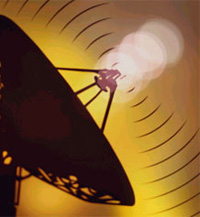World’s largest high tech giants unite to create revolutionary wireless technology
World’s largest high tech companies – Intel, Samsung, Microsoft and Panasonic – announced the creation of the alliance to set up a new wireless technology to transfer data at the speed of 1 gigabit per second and higher, CyberSecurity.ru website said. The tech giants will use the 60-gigahertz frequency range for the new technology.

The new alliance was called the WGA – the Wireless Gigabit Alliance. The new communication standard was therefore dubbed WiGig. WiGig will be based on Panasonic’s Wireless HD technology to transmit high-quality content to home electronic devices.
In addition to the four-above mentioned companies, the Wireless Gigabit Alliance will also include the following associated members: Atheros, Broadcom, Dell, LG Electronics, Marvell International, MediaTek, NEC, Nokia and Wilocity. Many of these companies were involved in the development of Wireless HD.
Unlike Wireless HD, WiGig will be more universal in its nature and will be capable of uniting cell phones, personal computers, camcorders, music players and other home electronic devices into one network. The founders of the new alliance said that WiGig’s speed would later be increased to 6 gigabits per second.
The new standard already has its opponents - the IEEE committee, which previously worked with WiFi and WiMax standards. Spokespeople for the committee said that they were developing a new version of WiFi technology which also stipulated the use of non-licensed 60-gigahertz radiofrequencies. Experts find it difficult to explain how two competing standards could coexist.
WiGig developers say that their technology is more universal than that of WiFi, since it allows to transfer not only the IP-data, but other packages too, for example the HDMI video format.
Independent experts say that the 60-gigahertz frequency range has a number of advantages, although it does have several serious drawbacks too. First and foremost, it is a microwave frequency which means that oxygen molecules will considerably absorb such waves in the air. In addition, the frequency has many neighboring radio technologies – satellite frequencies, for example, which may result in interference.
However, the broad range – 2.5 gigahertz vs. 40 megahertz and WiFi networks – allows to achieve larger speeds with the use of hundreds of subchannels.
The 60-gigahertz frequency range has another peculiarity: there should be direct vision available between the transmitting and the receiving devices, although the waves do penetrate through walls. Directional waves have their advantages too. They do not require strong signals: it is simply enough to direct the devices at one another to make them connect, whereas long and not always efficient radio search procedures are not necessary.
Subscribe to Pravda.Ru Telegram channel, Facebook, RSS!


